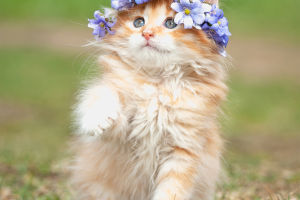In Disney's animated movie "The Lion King," besides Simba, Scar, and Rafiki, the ever-happy Timon and Pumbaa also leave a deep impression.
These two carefree and worldly companions rescue the fleeing and dying Simba and teach him survival skills such as eating fatty insects, chasing butterflies, and playing by the water's edge.
Under their careful nurturing, Simba grows daily, and they become close friends, inseparable companions in exploring the mountains and rivers, fishing, and bird hunting. They enjoy a carefree life in the forests and rivers. When Simba finally resolves to return to the kingdom to confront Scar, Timon and Pumbaa become Simba's staunchest allies, advising and strategizing and helping him defeat Scar's hyena henchmen.
"The Lion King" is an excellent story celebrated by countless people, and the phrase "Hakuna Matata," derived from Swahili, has become a mantra for many.
"Hakuna Matata" is a magical phrase, a key to the gateway to the planet of happiness. Today, we are talking about the real-life counterparts of the ever-happy Timon, the meerkats.
Meerkats may seem a bit goofy and small, but those who truly know them understand they are more than just cute.
Expert Diggers with Built-in Sunglasses
Meerkats are small diurnal animals in South Africa, inhabiting open woodlands and desert areas. They have slender bodies with short limbs, and their tails are long and powerful, resembling those of mice but serving a similar purpose to a kangaroo's tail—helping them maintain balance when standing on their hind legs.
With triangular heads, meerkats have black fur around their eyes and ears for various purposes. When digging burrows, the black fur around their ears acts like earmuffs, blocking out dust, dirt, and debris and functioning like microphones for better sound collection, enhancing their auditory abilities to detect potential dangers from all directions.
The black fur around their eyes is even more remarkable, acting as natural sunglasses. Under the blazing sun, this black fur shields their eyes from intense light, allowing them to see clearly and spot aerial predators early to avoid danger, even enabling them to stare directly at the sun without harming their eyes.
As mentioned, meerkats search for soft soil to dig burrows, which they call home. Their agile and powerful little paws make them adept diggers, earning them the title of expert diggers.
Not Only Do They Live In A Community, But They Also Sing.
Meerkats are highly social animals, living together in groups of up to thirty or forty individuals.
Their burrows resemble a large underground neighborhood with several entrances, interconnected tunnels, and chambers. These tunnels form a network resembling a spider's web, with three to five main passages connecting to smaller chambers where individual meerkats reside.
When foraging outside, the meerkat with the best eyesight acts as a sentinel, standing upright at the burrow entrance, vigilantly scanning all directions. The other meerkats wait underground in the burrow until the sentinel signals that the coast is clear. If no danger is detected, the sentinel remains silent, and the other members emerge one by one from the burrow.
The sentinel duty of a meerkat is taken seriously; even while other members are hunting or feeding, it remains vigilant, constantly monitoring the sky and surroundings for potential threats. The sentinel emits a loud warning call when a predator is spotted, prompting other members to seek refuge in the burrow entrances to avoid danger.
The vocalizations of meerkats provide excellent research material for understanding animal evolution and language formation. Their calls convey various meanings, with different warning calls for other predators. Moreover, meerkats produce two distinct types of vocalizations, resembling a form of singing, suggesting a sophisticated communication system.
Although we have yet to understand the meanings behind these different callsentire fully, the vocalizations of meerkats undoubtedly demonstrate that humans are not the only species capable of communicating meanings and emotions through vocalizations.
Aside from "The Lion King" mentioned earlier, meerkats, with their mischievous nature, also appear widely in other popular culture, such as the renowned documentary "Meerkat Manor," where Sir David Attenborough introduced these little creatures living in Africa to the general public, embedding their lovable and joyful image in people's hearts.


